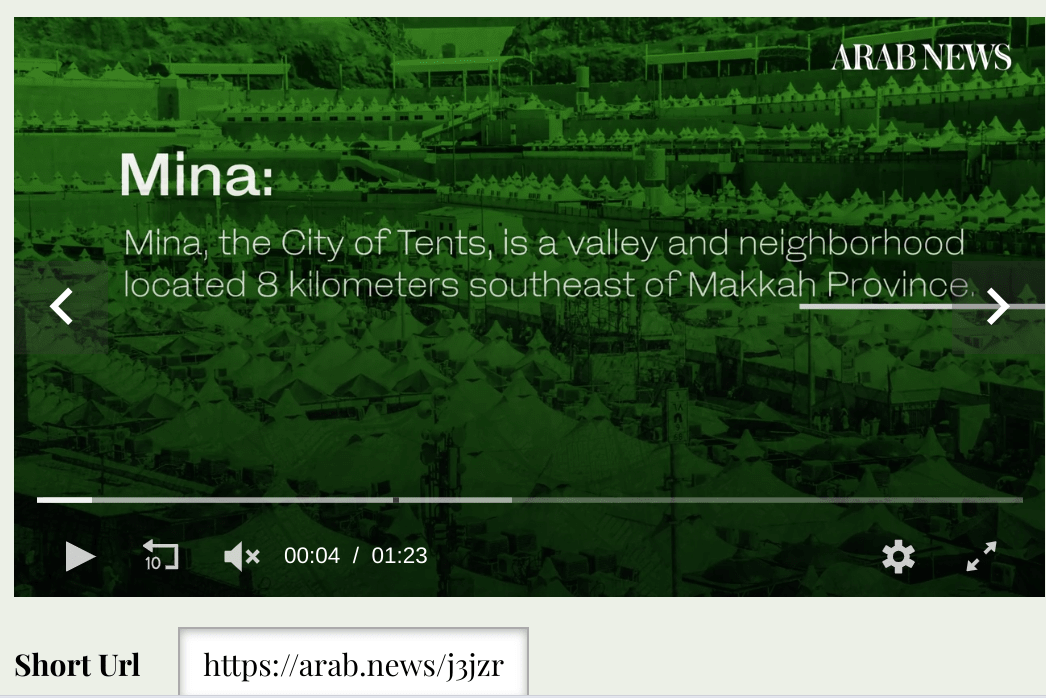The Saudi Tent City Could Serve as a Model for the Gaza Refugee Camp
- Get link
- X
- Other Apps
The humanitarian situation in Gaza is becoming even more difficult after the Israeli army extended its war against Hamas south to Khan Younis and plans to attack the last intact Hamas underground bases in Rafah. The international community, including the United States, has demanded that Israel protect Gazan civilians when the attack begins on a larger scale soon. The civilian population that moved to the south has previously been offered a safe zone in the Al-Mawas area on the shores of the Mediterranean Sea. Relief for the plight of Gazan civilians may also be found on the Egyptian side.

Since the beginning of the war, Egypt has tried to strengthen its own security at the border to keep the Palestinians out, by sending soldiers and armored vehicles and strengthening border fences. Now, however, The Wall Street Journal has obtained satellite images, which show that concrete walls have been erected in the area intended as a refugee camp. Satellite images taken in 4.-14. February show that the ground in the area has also been cleared. According to WSJ information, the Egyptian refugee camp is being prepared in case of an Israeli ground attack. Egyptian local authorities deny this.
According to unconfirmed information, it is an area of about eight square miles or 20.7 square kilometers on the Egyptian side of the border with Gaza.
The Mina Valley is located 8 kilometers southeast of the city of Mecca in the Hejaz region of Saudi Arabia and is commonly known as the “City of Tents”. In Mina, the largest tent city in the world has been built on an area of about 20 km2 – so comparable in size to the refugee camp that is apparently being built on the Egyptian side – and it can accommodate up to three million pilgrims in more than 100,000 air-conditioned tents.

Background and video from this link
The tents themselves come in three sizes: eight square meters, six x eight meters or 12 x eight meters. The tents are connected to each other through paved, lighted and signposted corridors. 9,000 standard and electric wheelchairs have been reserved for pilgrims who need them.
In Mina’s tent city, you can find all the basic comforts of living, and in addition, air conditioning and modern means of communication are available. In addition to water and electricity, each tent has automatic fire sprinklers. The streets are equipped with multilingual street signs and service shops and clinics have been established in all areas. Other services include Masjid al-Khayfi’s 20,000 m2 mosque, which is the largest in Mina’s tent city.
In the past, pilgrims came to Mecca with their own tents, often made of cotton, and this caused a fire hazard. Now the tents are made of fiberglass, while the outer surface is Teflon. The new tent fabric has a lifespan of 25 years and can help protect against fire, wind, corrosion and also has an anti-slip surface. Its structure is easy to change, and the sunlight filter in the material keeps out about 90 percent of the sun’s rays.
Each subcamp is equipped with a kitchens, bathrooms and washing facilities, and they are connected to other camps by trails. The tents are also marked with unique color and number pairs to make them more recognizable.

For most of the year, Mina’s tent city is empty and it has been considered in the past, for example, as a place to stay for Syrian refugees; However, Saudi Arabia did not want to take refugees there. This will probably be the situation even now, even if all Gazans could be accommodated there even immediately. However, Mina’s experiences are useful for the Gazans, whether the location is in Gaza or on the Egyptian side.
In order to solve the humanitarian crisis of the Gazans immediately, to rebuild the devastated Palestinian territory in the medium term, and to implement a two-state solution in the long term, I published in early January a three-phase A Day After the Gaza War plan that I consider both pragmatic and feasible. The mentioned presentation is based on the implementation of the so-called Sinai option, the first step of which was the construction of a temporary refugee camp on the Egyptian side of the Gaza border. If the first phase of the plan is being implemented, it also creates a good basis for the next two phases.
If a refugee camp is built for the Gazans, it should be made permanent like Mina’s tent city. If a more permanent urban settlement for the Gazans is (re-)built in either Gaza or Sinai, the tent city would be ready to receive new groups of refugees from different regions, or it could also serve as a temporary reception center for asylum seekers seeking Western countries. The use of the area should naturally be agreed with Egypt with appropriate compensations.
- Get link
- X
- Other Apps
Comments